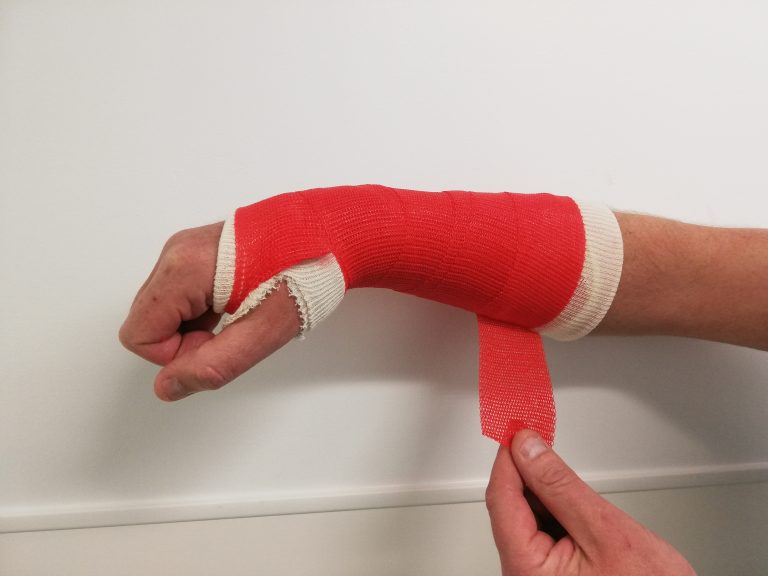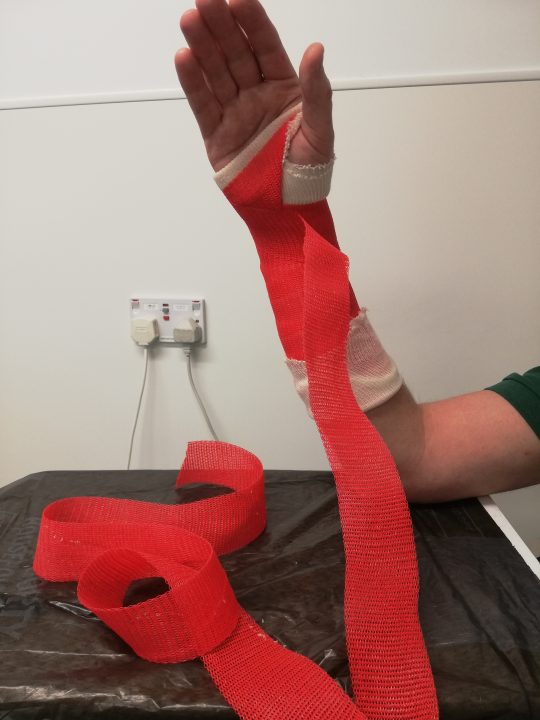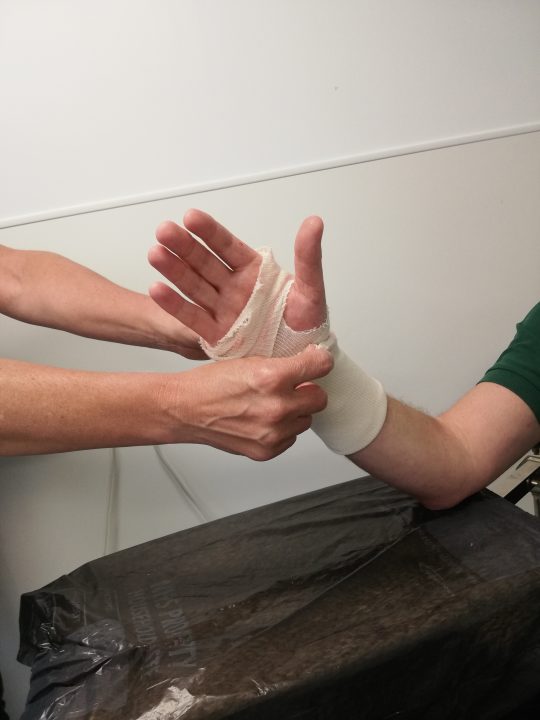Page contents
Looking after your plaster cast means you’ll recover much faster. Here’s our advice on how to keep your plaster in good condition.
Basic plaster cast
Plaster casts are made up of a bandage and a hard covering (usually plaster of Paris). They allow broken bones in the arm or leg to heal by holding them in place, and usually need to stay on for between four and 12 weeks.
Basic care:
- Keep your arm or leg raised on a soft surface, such as a pillow, for as long as possible in the first few days. This will help any swelling to go down and help the cast dry correctly.
- Don’t get your plaster cast wet. This will weaken it, and your bone will no longer be properly supported.
- You can use a plastic bag to cover up the cast when you have a bath or shower. Try using sticky tape or a rubber band to seal the bag at the top and bottom to make it as watertight as possible.
Taking good care of your cast will help ensure a better recovery.
Find out more about caring for your cast in the videos below and our plaster care patient information leaflet.
Non-urgent advice: Having problems with your cast?
Please phone the Plaster Room on 01872 253234 during office hours.
If it’s out of hours and you need urgent advice, please call the Emergency Department (ED) on 01872 253111.
Video guides
Soft casts
“Soft Cast” is a particular type of plaster cast that is designed to be flexible but strong enough to protect the broken bone whilst it is healing.
Unlike a standard plaster cast, you don’t need to return to the hospital to have it taken off. You can easily remove your soft cast at home on the date we tell you.
After your soft cast has been fitted
- Elevate your limb for the first 48 hours or as instructed.
- Keep moving all joints not enclosed in the plaster, especially your fingers
- Do not get the plaster wet
If the plaster is uncomfortable, feels too tight, is rubbing, or becomes damaged or broken, please call the Plaster Room on 01872 253234.
Please go to the Emergency Department (ED), Minor Injuries Unit (MIU) or your GP straight away if your fingers become
- swollen,
- painful,
- blue,
- numb,
- cold,
- or you get pins and needles in them.
Removing your soft plaster cast
You should have been given a date to remove the cast at home. Do not remove it before this date. Please do not use scissors to remove the cast.
To remove it:
- Place the limb on a table, chair arm or bed for support. Use a cushion for comfort.
- Find the end of the casting material and tease away the end of the tape.
- Support the arm while slowly unwinding the material.
- On the second layer you may find a small slab which should lift off, then you can continue to unwind the second layer.
- After you’ve removed the cast you can bathe the limb and start moving the limb in warm soapy water.
- After washing, you can apply moisture cream if required.



This video below also shows you how to remove your cast.
Non-urgent advice: Please note:
The video below also shows how to remove a soft cast using scissors, however we DO NOT recommend you do this as it is very easy to remove by undoing and there is a risk of nicking the skin with the scissors.
If you are unsure about removing your cast and would like advice on how to do so, please call the Plaster Room on 01872 253234.
If you cannot remove the cast, or your limb is still painful after removal, please call the Fracture Clinic on 01872 253091.
Page last reviewed: 17 October 2023

